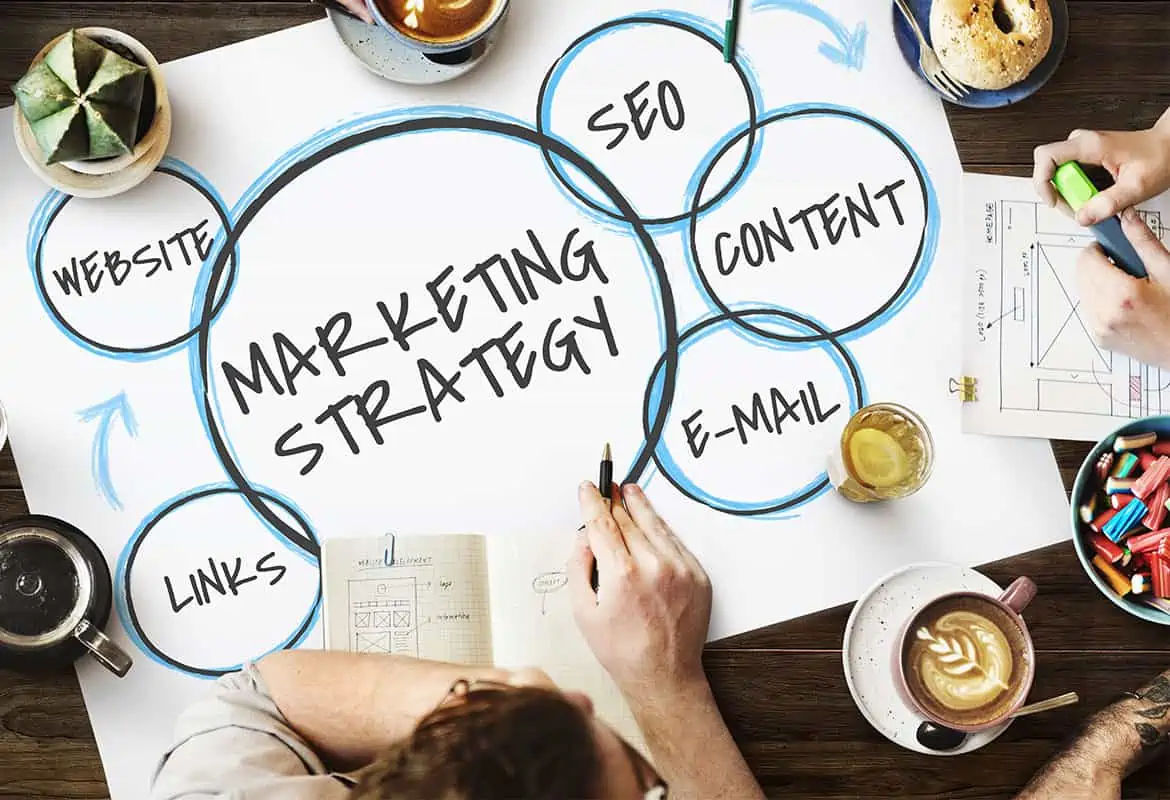Budgets are always limited, and when you are a small business seeking to optimise your marketing potential, handling your budget can be particularly stressful.
You need to save money and make your marketing dollar stretch as far as possible, but you also need to be able to go toe to toe with your competitors in the market.
These competitors may be larger companies with more expansive budgets, and they may be competing for the same limited audience.
So, what do you do?
To get the most from your budget and to stay competitive in your field, you need a strategy. In fact, you don’t need just one strategy — you need the right array of strategies deployed together for maximum effect.
There are many types of marketing strategies for small businesses.
Take a look at our list of the best and learn more about how to get the very best from each one.
The cost-effective marketing strategies your small business needs to make your budget go further
1. Search Engine Optimisation (SEO)
SEO is just as big a deal today as it was five or so years ago — perhaps even more so in some respects. It’s also become much more complex and difficult to get right in recent years, so a careful approach is required.
Make sure to research your keywords carefully and use them naturally within your content. Don’t engage in paid link strategies, and encourage organic linking to your pieces. Deploy different types of media — such as image, video and infographic content — to increase engagement and bump your page up the search engine rankings.
2. Content marketing
Content marketing is one of the best types of marketing strategy for small business, and it helps you to tick off numerous boxes in one go. The content of your product will help you to communicate and solidify your brand identity, attract traffic via inbound marketing, provide support to your customers, and even encourage viral shares across social media. Basically, this is something you need to be doing.
But how do you do it well? To start with, you need to be working with the right data. You need to know what your customers want to see and know and then deliver it to them. You also need to know what your objective is — what do you want your customers to do after they have consumed your content? Place considered calls to action or CTAs in strategic positions to encourage this activity.
3. PPC advertising
PPC advertising refers to any ads that you pay for based on how many users click on them. In other words, you won’t pay to deploy these ads — on third-party websites or on social media channels, for example. Instead, you will have to pay a small charge every time you get a click — hence, pay per click or PPC.
The problem is, a click by itself is not much use. Just because someone clicks on your ad does not mean they will convert, and you will need to pay the fee either way. With this in mind, you need to make sure that your landing pages are optimised for conversion — with a considered layout and the CTAs mentioned above — and that you are targeting the right kind of customers with your ads.
Use A/B testing to find out which ads are providing the most cost-effective marketing strategy for your small business. To do this, run two similar ads side by side, with one crucial element changed. This will give you insight into how best to optimise your ads in the future.
4. Facebook advertising
Facebook advertising is a useful way of augmenting the benefit you are receiving from your organic Facebook campaigns. Deploying these ads alone is not enough — you still need to be cultivating an active and engaged group of followers on Facebook and posting useful links that attract leads organically.
From here, you can use Facebook Ads to expand the scope of the links you post — amplifying special offers and deals that will excite and energise your audience. You will generally have to pay for these ads on a PPC basis, which means you need to choose the links you promote carefully. In addition, you will need to make sure that you are targeting the right user groups and keywords to maximise your chances of conversion.
5. Social media marketing
There is more to social media marketing than just Facebook and the Facebook Advertising service. To get the best out of social media marketing, you need to know your audience well. Which social media platforms do they like to use, are they more of a TikTok and Instagram-oriented crowd, or are they looking for content on LinkedIn? You also need to think about which channels best support the medium of your content — Periscope and TikTok are well suited to fast-paced, immediately engaging videos, LinkedIn is better for longer-form, text-based pieces, while Facebook and Instagram continue to have a broader, more diverse audience.
The best thing about marketing on social media is that it is free. Yes, you will have to pay for advertising and other premium features, but you will be able to post on the channel free of charge. Despite being free, social media marketing is highly effective. If you can build the right kind of audience, research keywords and hashtags, and release the kind of content that fits right into the heart of the online discourse, you are going to achieve great things marketing your products and services in this way.
6. Email marketing
Email marketing is a tried and tested favourite among digital marketers. Even before the advent of social media and a more online-focused way of life and business, customers had email addresses that marketers could use to sell their products. In the third decade of the 21st century, this remains an effective channel — but only if you go about it in the right way.
Firstly, you need to segment your audience. You will have products and services that are attractive to some of your customers and not to others, so get to know which sections of your audience are interested in a specific offer and market directly to them.
Secondly, you can use the A/B testing we discussed earlier to find out which subject lines and content forms are garnering the most attention and the most conversions. Most of your emails will be left unopened, but to get the best from your marketing dollar, you need to optimise the number of emails that are getting opened and those that are resulting in conversions.
Finally, optimise your landing pages. To achieve the highest level of conversions, your customers need to know exactly where to go — so show them, with carefully crafted and well-positioned CTAs.
Cost-effective strategies that suit your budget
When deployed in the right way, the above strategies should fit neatly into your budget. You will be able to promote your products and services at very little cost, augmenting this effect with paid services such as PPC advertising, or with more expensive strategies such as video content, when it matters.
It’s not about removing the cost of digital marketing altogether — it’s about making your dollar go further so that your business can be seriously effective even with a strict budget.
Do this by selecting marketing strategies that will complement each other.
Contact our team to learn more about marketing your business in the most cost-effective way and about deploying these all-important strategies within your own digital marketing program.



